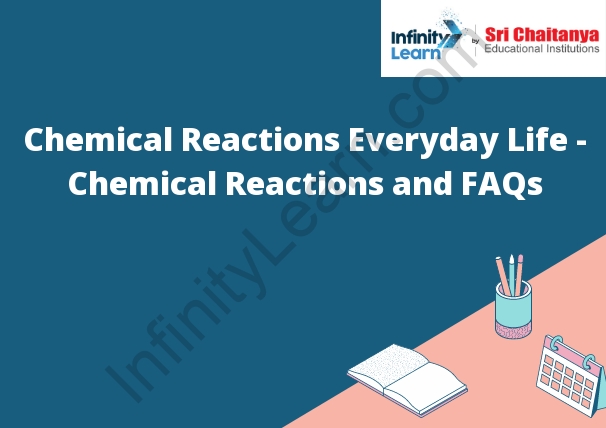Table of Contents
Common Chemical Reactions in Everyday Life
Some common chemical reactions in everyday life include photosynthesis, respiration, combustion, and dissolution.
Photosynthesis is a process that uses sunlight to convert carbon dioxide and water into glucose and oxygen. Glucose is a type of sugar that plants use to produce energy. Oxygen is a gas that is necessary for humans and other animals to breathe.
Respiration is a process that uses oxygen to convert glucose into energy. This energy is used by the cells in the body to do things like breathe, move, and think.
Combustion is a process that uses oxygen to convert a fuel into energy. This energy is used to power things like cars, planes, and trains.
Dissolution is a process that uses water to convert a solid into a liquid. This liquid can then be absorbed by the body.

Types of Chemical Reaction in Daily Life
Reactions that occur in the body, such as digestion and photosynthesis, are biochemical reactions. Chemical reactions that occur in the laboratory are called synthetic reactions. There are three types of synthetic reactions: substitution, addition, and elimination.
In a substitution reaction, one atom or group of atoms is replaced by another atom or group of atoms. In an addition reaction, two or more atoms are added together. In an elimination reaction, one or more atoms are removed.
Photosynthesis:
Photosynthesis is the process that plants use to turn sunlight into food. The process begins when the plant’s leaves absorb sunlight. This sunlight is turned into energy, which the plant uses to create glucose from carbon dioxide and water. Glucose is a type of sugar that the plant uses to power its growth and activities.
Rusting:
The oxidation of iron is a chemical reaction in which iron atoms lose electrons to form Fe2+ ions. These ions combine with oxygen atoms to form Fe3O4 (rust).
Rusting is a process that occurs when iron or steel is exposed to oxygen and moisture. The oxygen and moisture react with the metal to form a new compound called rust. Rust is a red or orange colored compound that is flaky and brittle.
The rusting process can be slowed by coating the metal with a layer of paint or other material that will protect it from the oxygen and moisture.
Cellular Respiration:
-The process of breaking down glucose and other organic molecules in the cells to release energy
-Occurs in the cytoplasm
-Involves the transfer of electrons from one molecule to another
-Produces ATP, water, and carbon dioxide
Anaerobic Respiration:
Anaerobic respiration is the process of breaking down glucose without the presence of oxygen. In anaerobic respiration, glucose is converted into lactic acid. This process can occur in the muscle cells, liver cells, and red blood cells.
Combustion:
Combustion is a chemical reaction between a fuel and an oxidant, usually atmospheric oxygen, that produces heat and light.
The reactants are usually fuels such as wood, coal, oil, or natural gas, and oxygen from the air. Incomplete combustion produces carbon monoxide.
Incomplete combustion of fuels can cause air pollution.
Acid–-base Reactions:
The following acid-base reaction may be used to produce ammonia gas:
The reaction of an acid with a base is called a neutralization reaction. In this reaction, the acid and base react to form a salt and water. The acid donates a proton (H+) to the base, and the base accepts the proton to form the salt.





